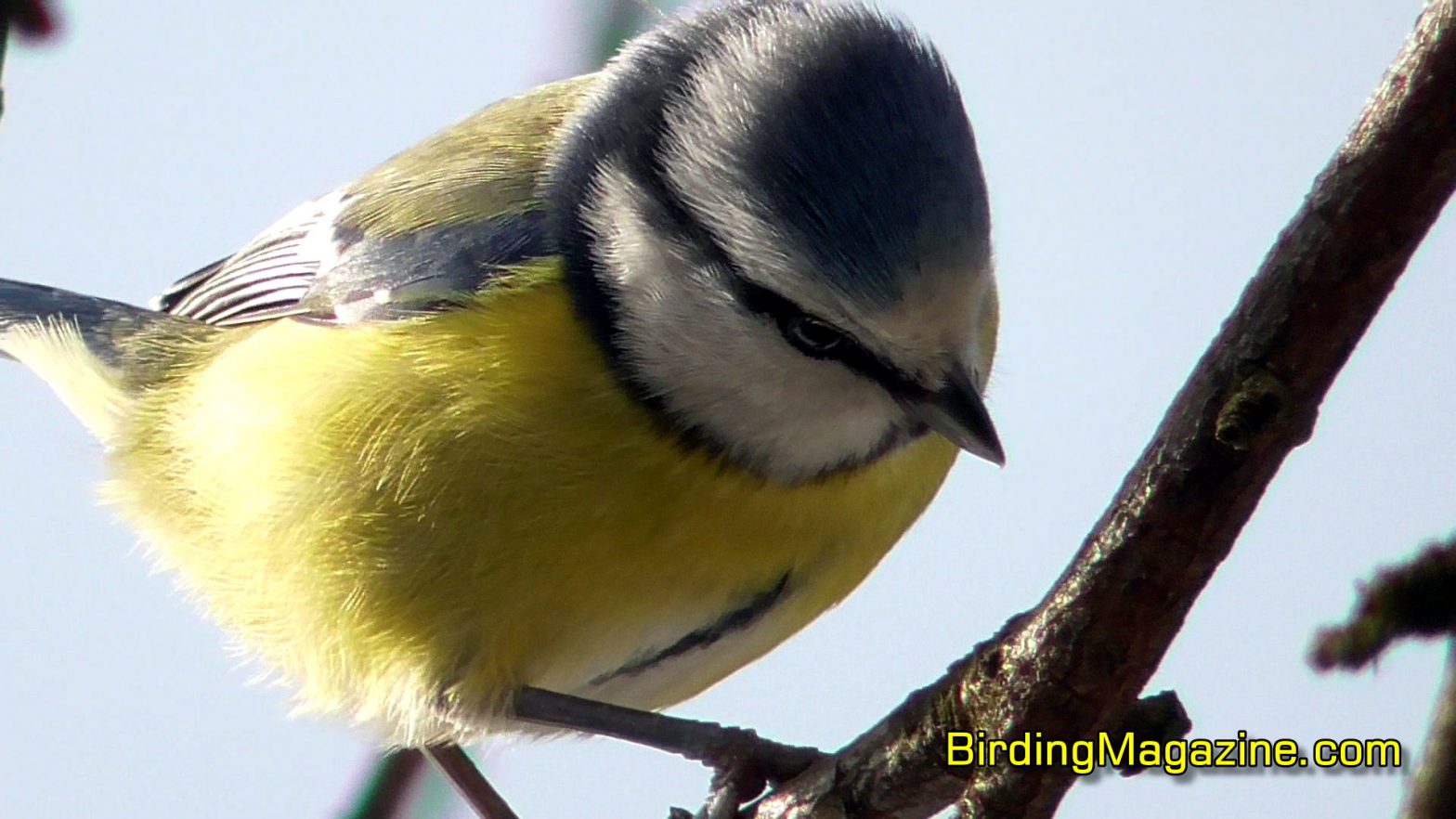The Eurasian Blue Tit (Cyanistes caeruleus) is a charming and colorful bird that captivates birdwatchers and nature enthusiasts with its vibrant blue plumage and lively behavior. Found across Europe and parts of Asia, this small passerine species is known for its adaptability and can be observed in a variety of habitats, from woodlands to urban gardens.
In this comprehensive article, we will explore the fascinating characteristics and behaviors of the Eurasian Blue Tit, including its physical description, mating rituals, nesting habits, diet, and more. By delving into the world of this delightful songbird, we can gain a deeper understanding of its life and appreciate the beauty it brings to our natural surroundings.
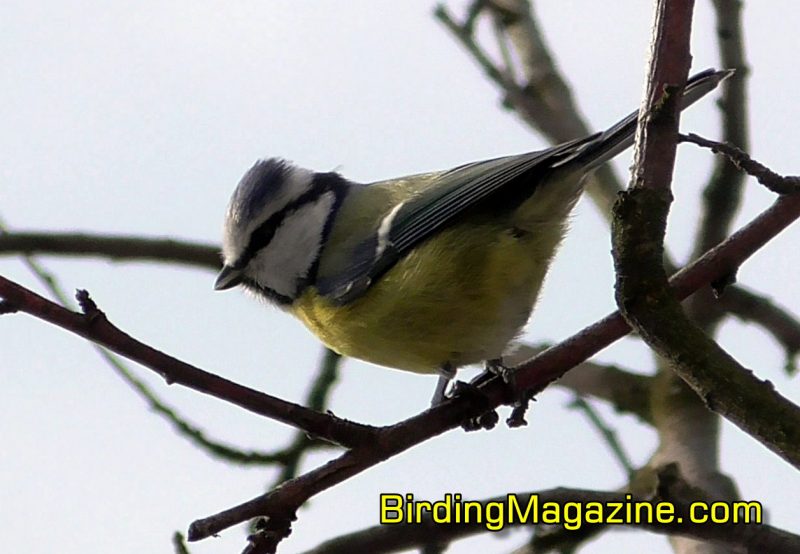
Description (How to Identify)
The Eurasian Blue Tit (Cyanistes caeruleus) is a small passerine bird that belongs to the tit family (Paridae). It measures about 11.5 to 12.5 centimeters in length, with a wingspan of approximately 18 to 20 centimeters. The blue tit has a distinctive appearance with vibrant colors, making it easily identifiable.
This bird features a bright blue crown, wings, and tail, which contrast beautifully with its yellow underparts. The back is primarily green, while the face displays a white patch on each cheek, separated by a narrow black stripe running through the eyes. The bill is black and short, and the legs are bluish-gray. The blue tit’s appearance is often described as charming and colorful.
Differences Between Males and Females (How to Distinguish)
Male and female Eurasian Blue Tits share a similar appearance, making it challenging to distinguish between the sexes based on their plumage alone. However, subtle differences do exist, although they may not be apparent at first glance. Males typically have brighter and more vibrant colors than females. The blue crown, wings, and tail feathers of the males tend to be more intense and vivid compared to the females.
Another way to identify the sexes is by observing their behavior. During the breeding season, males often display more vigorous courtship behaviors, such as singing loudly and performing aerial displays, to attract potential mates. However, these behavioral differences may not be visible outside the breeding season.
Range (Where it Naturally Exists)
The Eurasian Blue Tit is native to a vast range of habitats across Europe, Asia, and North Africa. Its distribution spans from the United Kingdom and Ireland in the west to parts of Russia, Mongolia, and Japan in the east. In the south, it can be found in countries such as Morocco, Algeria, and Tunisia. This bird has also been introduced to other regions, including New Zealand.
Habitats (Where It Tends to Live)
Eurasian Blue Tits occupy a variety of habitats, ranging from deciduous and coniferous forests to parks, gardens, and urban areas. They are highly adaptable and can thrive in diverse environments. Woodlands with a mixture of trees, shrubs, and open areas provide an ideal habitat for these birds.
They are known to frequent gardens, especially those with mature trees and shrubs that offer suitable nesting sites. Eurasian Blue Tits are also common visitors to bird feeders, where they readily consume seeds, nuts, and other offerings.
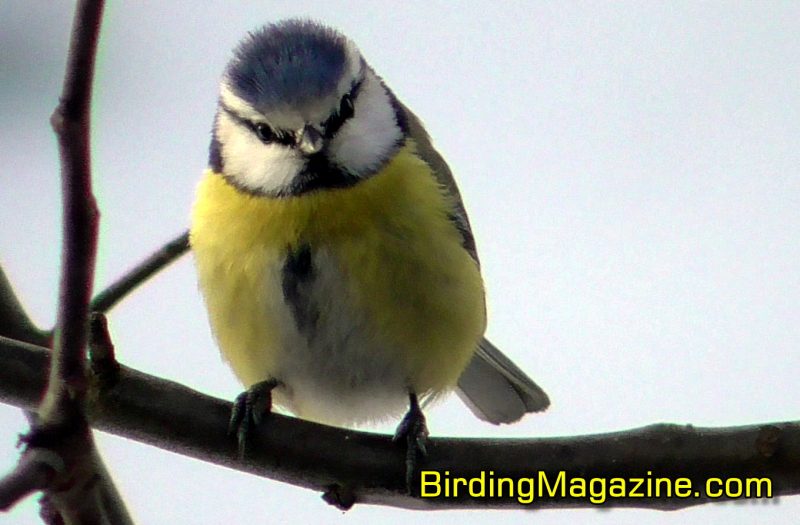
Feeding (What It Eats)
The diet of the Eurasian Blue Tit is diverse, consisting of both animal and plant matter. These birds are primarily insectivorous, feeding on a wide range of invertebrates such as caterpillars, spiders, beetles, and flies. They are highly agile and adept at catching insects on the wing, often displaying acrobatic maneuvers as they forage.
In addition to insects, the blue tit’s diet includes seeds, berries, and small fruits. During the winter months when insects are scarce, they rely more heavily on these plant-based food sources. Eurasian Blue Tits are also known to visit bird feeders, where they readily consume various types of seeds, suet, and nuts.
Mating (How It Looks for a Mate)
The breeding season for Eurasian Blue Tits typically begins in late spring. Males actively seek out potential mates by engaging in elaborate courtship displays. These displays involve singing vibrant songs, performing acrobatic flights, and exhibiting flashy plumage to attract the attention of females.
Once a pair has formed, they engage in mutual preening, where they clean and groom each other’s feathers. This behavior strengthens the bond between mates. Eurasian Blue Tits are typically monogamous, forming long-term pair bonds that can last for multiple breeding seasons.
Nesting (How and Where it Builds Nests)
Eurasian Blue Tits are cavity nesters, meaning they prefer to build their nests in natural tree cavities or suitable nest boxes. They are known for their exceptional nest-building skills. The female takes the primary responsibility for constructing the nest, while the male assists by bringing nesting materials.
The nest itself is a delicate structure made primarily of moss, leaves, and grass, lined with feathers, fur, or other soft materials. The female carefully weaves these materials together, creating a cozy cup-shaped structure within the nesting cavity. She meticulously arranges the nest to provide a comfortable and secure environment for the eggs and future nestlings.
Eggs (How Many Eggs It Lays, What They Look Like and Who Looks After Them)
The female Eurasian Blue Tit typically lays a clutch of 7 to 14 eggs, although the average is around 9 or 10 eggs. The eggs are small and white, speckled with reddish-brown markings. The speckles serve as camouflage, helping the eggs blend into the nest and providing some protection against predators.
Once the eggs are laid, both the male and female take turns incubating them. The incubation period lasts for approximately 13 to 16 days. During this time, the parents diligently keep the eggs warm and protected. After hatching, both parents actively participate in feeding and caring for the nestlings.
Fledglings (How They Differ from Adults and How Long It Takes Them to Learn the Skills)
When the young Eurasian Blue Tits hatch, they are initially naked and helpless. The parents provide constant care, feeding them a diet primarily composed of insects. As the nestlings grow, they develop a layer of downy feathers, gradually acquiring their adult plumage.
After around 17 to 21 days, the fledglings are ready to leave the nest. At this stage, they closely resemble the adults in appearance, with their vibrant blue and yellow plumage. However, they may have a slightly duller coloration, which will intensify as they mature.
Although the fledglings are capable of flight, they continue to rely on their parents for food and guidance for a few weeks after leaving the nest. The parents teach them essential foraging skills, including how to locate and capture insects, as well as where to find suitable food sources.
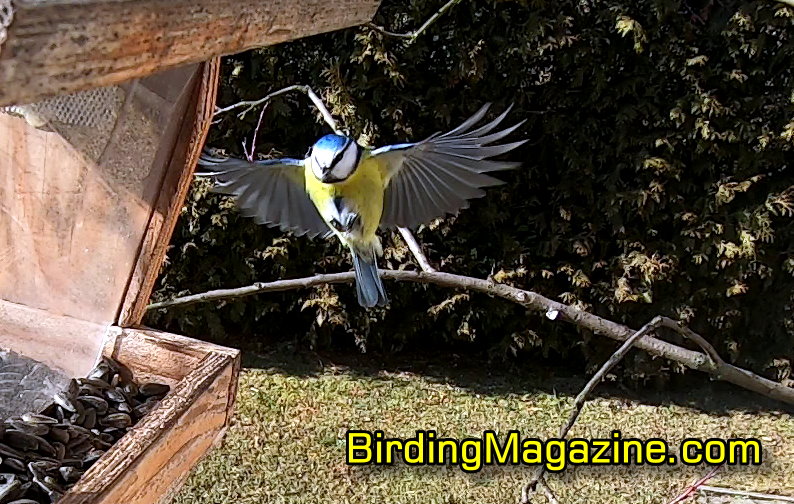
Song and Call (What They Sound Like)
The Eurasian Blue Tit is known for its wide repertoire of vocalizations. Its song is a series of clear, high-pitched notes, often described as a melodious “tsee-tsee-tsee” or “see-see-see.” The song is typically loud and can be heard throughout its territory, especially during the breeding season.
In addition to the song, the blue tit produces various calls for different purposes. These calls include short, sharp “chick” notes, which are used to communicate within the flock and signal potential threats. They also emit a soft, rolling “trrr” sound during courtship displays or to establish territory boundaries.
Predators (Who Are the Greatest Threats)
Eurasian Blue Tits face several natural predators throughout their range. Nest predation poses a significant threat, with species such as squirrels, martens, and snakes targeting the eggs and nestlings. Adults may also fall victim to predation by larger birds of prey, such as sparrowhawks and owls.
Furthermore, domestic cats and other introduced predators, including invasive species, pose a considerable risk to blue tits, particularly in urban and suburban areas. Habitat destruction and fragmentation also impact their populations, reducing the availability of suitable nesting sites and foraging habitats.
Conservation Status
The Eurasian Blue Tit is classified as a species of “Least Concern” on the IUCN Red List of Threatened Species. Its large population size, extensive distribution, and adaptability contribute to this classification. However, localized declines in certain regions have been observed due to habitat loss, particularly the reduction of suitable nesting sites.
Conservation efforts focus on preserving and creating habitats that support the nesting and foraging requirements of blue tits, including the provision of nest boxes in gardens and woodlands. Promoting awareness of the importance of native vegetation and reducing the impact of introduced predators also plays a vital role in their conservation.
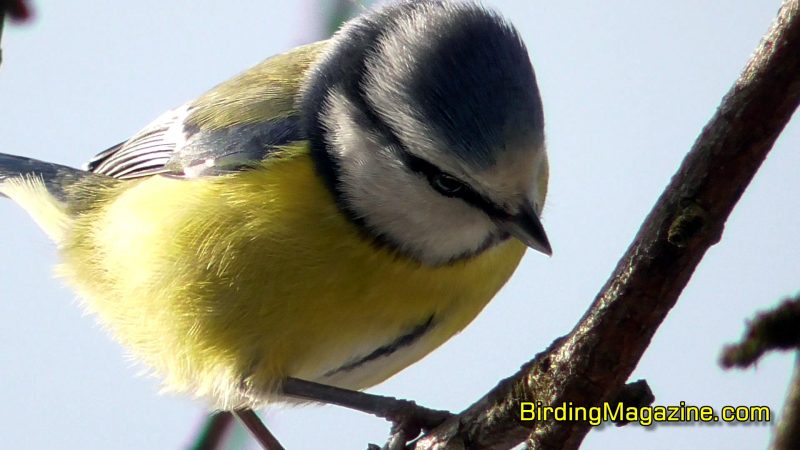
Similar Species
The Eurasian Blue Tit shares its habitat with several other tit species, which can sometimes lead to confusion in identification. Some similar species include the Great Tit (Parus major), Coal Tit (Periparus ater), and Willow Tit (Poecile montanus). These species exhibit variations in plumage patterns and colors, enabling differentiation when observed closely.
The Great Tit is larger and has a more substantial black stripe running through its yellow breast, while the Coal Tit is smaller and has a distinctive white patch at the back of its neck. The Willow Tit, on the other hand, has a duller appearance with brown tones and a more prominent black bib.
Careful observation of key features, such as size, color patterns, and distinctive markings, can aid in accurately identifying the Eurasian Blue Tit and distinguishing it from similar species.
Conclusion
The Eurasian Blue Tit, with its striking blue plumage and lively nature, remains a beloved species among bird enthusiasts and casual observers alike. Its adaptability to different environments and ability to utilize human-provided nest boxes have helped sustain its population across its vast range. As we continue to appreciate and protect this delightful songbird, it is essential to ensure the preservation of suitable habitats and the conservation of nesting sites.
By safeguarding the diverse ecosystems that the Eurasian Blue Tit depends on, we can ensure that future generations will continue to enjoy the beauty and charm of this remarkable bird. So, next time you venture outdoors, keep an eye out for the vibrant blue flutter of the Eurasian Blue Tit and take a moment to appreciate its presence in our natural world.
